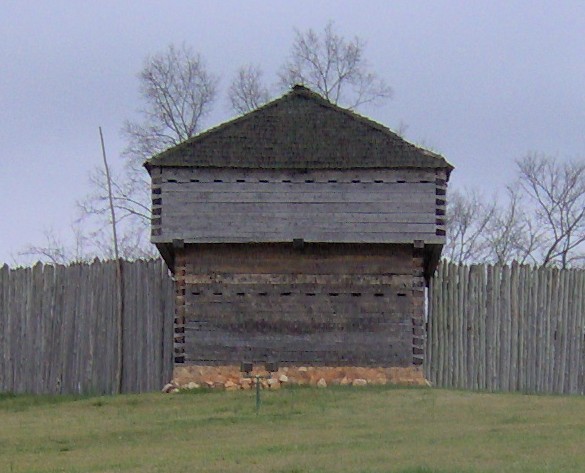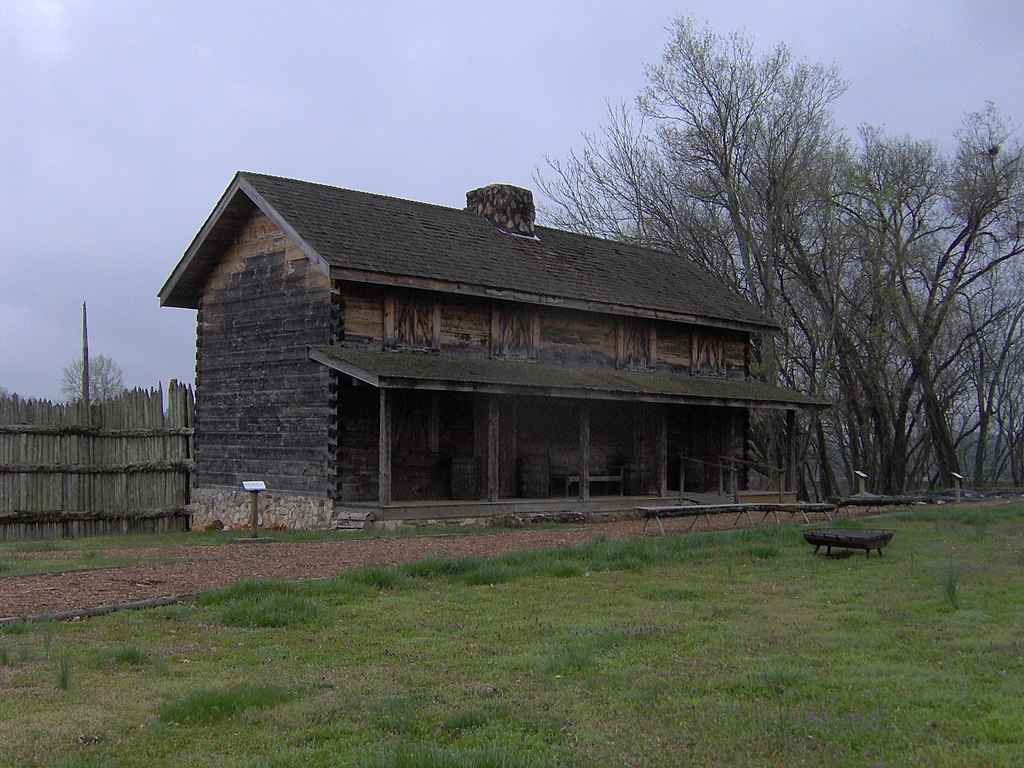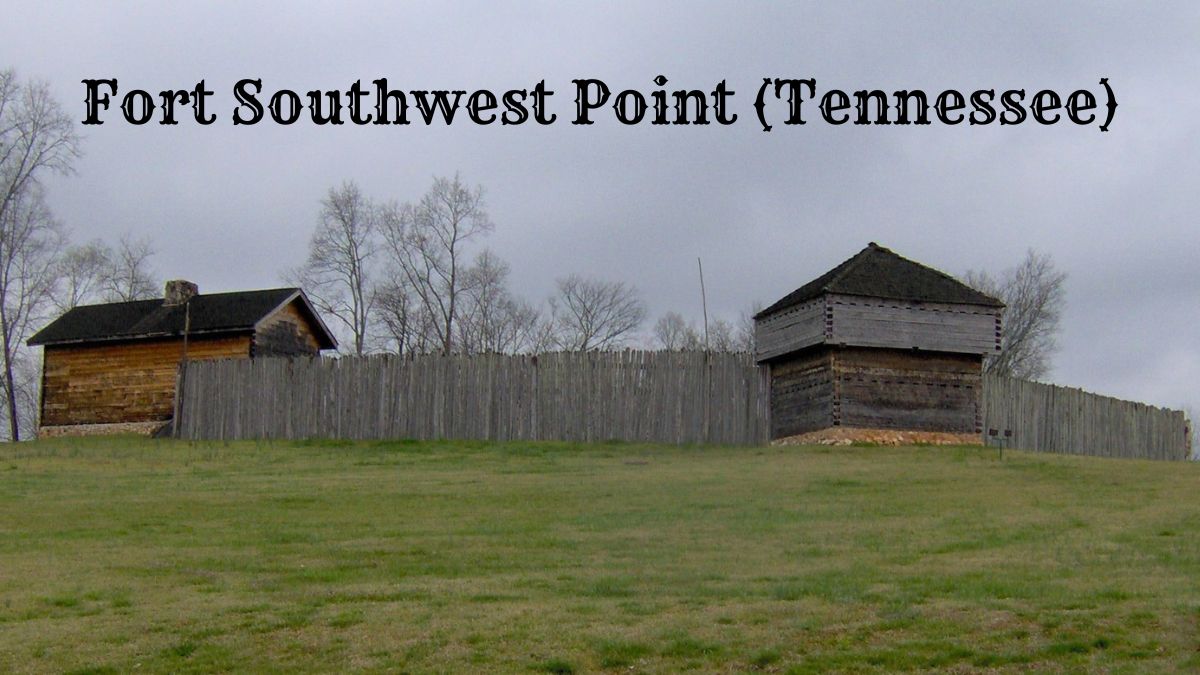Fort Southwest Point in Kingston, TN, offers a captivating glimpse into early American history.
Established in the late 18th century, the fort served as a strategic federal outpost and was crucial in interactions between American settlers and the Cherokee.
Visitors can explore reconstructed structures at the visitor center, learn about their historical significance, and participate in educational programs.
The fort’s unique location near the Clinch and Tennessee Rivers highlights its strategic importance in migration and settlement patterns.
Discover Fort Southwest Point’s rich history and cultural significance through its well-preserved artifacts and engaging exhibits.
History of Fort Southwest Point Kingston, TN

Fort Southwest Point, established in the late 18th century, played a pivotal role in early American and Cherokee interactions, served as a strategic federal frontier outpost, and saw significant military developments.
Early American and Cherokee Relations
Fort Southwest Point was integral in mitigating tensions between early American settlers and the Cherokee in Tennessee.
Constructed after the American Revolution, it functioned as a base to oversee the adherence to treaties between the U.S. government and Cherokee leaders.
Regular meetings and negotiations occurred at the fort, shaping the Cherokee lands debate.
Federal troops stationed there helped manage conflicts and facilitated trade and communication, making the fort an essential site for diplomatic efforts in the southeastern United States.
Federal Frontier Outpost Establishment
The U.S. government established Fort Southwest Point in 1797 as a defensive measure against potential threats and to enforce federal laws on the frontier.
Located in what was then a boundary region between settled territories and Cherokee lands, the fort aimed to project federal power and provide security.
Key Functions:
- Military defense: Guarding against foreign and domestic threats.
- Law enforcement: Preventing illegal encroachments on Cherokee lands.
- Logistical hub: Supporting other frontier outposts with supplies and personnel.
The fort reinforced the government’s commitment to regional stability through its garrison.
Military Presence and Development
Fort Southwest Point’s military presence grew, reflecting its strategic importance.
Initially housing a modest number of federal troops, the fort expanded to accommodate a larger garrison in response to increasing regional demands.
The fort saw significant construction projects to improve its defenses and facilities, including:
- Barracks: Housing soldiers and officers.
- Armories: Storing weapons and ammunition.
- Fortifications: Enhancing defensive capabilities.
The fort’s development mirrored the growing complexities of maintaining order and defending U.S. interests in the southeastern United States.
Reconstruction and Preservation

Fort Southwest Point has undergone significant reconstruction and preservation efforts. These tasks have aimed to restore and maintain key structures while ensuring historical accuracy and integrity.
Archaeological Excavations
Before reconstruction efforts began, archaeological excavations were vital to uncover the fort’s original layout and features.
Conducted by the Tennessee Division of Archaeology, these excavations revealed critical details.
Artifacts such as pottery shards, military equipment, and personal items provided insights into the daily life of the fort’s inhabitants. These findings informed the accurate reconstruction of structures.
Rebuilding the Fort Structures
Reconstruction involved meticulous efforts to rebuild key components like the blockhouse, barracks, and palisade.
Craftsmen recreated these structures using historical records and excavation findings to reflect their original 18th-century designs.
The reconstructed blockhouse and palisades now offer visitors a glimpse into the fort’s past. The barracks have been restored to demonstrate the soldiers’ living conditions.
Inclusion in the National Register of Historic Places
Fort Southwest Point has been included in the National Register of Historic Places, which helps protect and acknowledge its historical significance.
This inclusion underscores the fort’s role in early American history and supports continued preservation efforts.
The fort’s preserved artifacts and reconstructed structures are displayed in a dedicated museum on-site, allowing visitors to engage with the fort’s history comprehensively.
The status has also secured funding and resources for ongoing maintenance and educational programs.
Strategic Location and Landscape

Fort Southwest Point is uniquely situated at the confluence of the Clinch and Tennessee Rivers. This location allowed the fort to play a crucial role in the region’s migration and settlement patterns.
Geographic Importance
The fort’s position near the Tennessee River provided significant strategic advantages for transportation and communication.
The nearby waters, including Watts Bar Lake, allowed for easy movement of goods and people, essential for trade and military logistics.
Additionally, the proximity to Interstate 40 and the historic Avery Trace made Kingston a vital stop for settlers heading west. This highway connection helped integrate the fort with broader regional and national transportation networks.
Influence on Migration and Settlement
The strategic location of Fort Southwest Point greatly influenced migration patterns into Tennessee.
The fort was a critical stopover for settlers seeking new opportunities across the Appalachian Mountains. Its presence assured safety and trading prospects, attracting a steady stream of pioneers.
Moreover, the fort facilitated interactions between different communities, promoting cultural exchanges and contributing to the growth of Kingston.
The surrounding fertile land and water access supported agricultural settlements, further solidifying the area’s appeal.
Fort Southwest Point Today
Fort Southwest Point has been meticulously reconstructed to reflect its historical significance.
Visitors can engage with the site through a modern visitor center offering educational activities and events that bring history to life.
Visitor Center and Educational Activities
The visitor center serves as the hub for all educational programs and displays.
It features a museum showcasing artifacts and exhibits that delve into the fort’s history and its role in the region.
Interactive displays provide insight into the daily life of the soldiers and inhabitants of the fort.
Educational programs cater to different age groups, ensuring an engaging experience for adults and children.
These activities include guided tours, where knowledgeable guides share detailed information about the fort’s history and significance.
Additionally, hands-on activities are crafted to make learning about history enjoyable and memorable.
Events and Living History Programs
The fort hosts numerous events throughout the year.
Living history programs are particularly popular. In these programs, reenactors portray historical figures and demonstrate skills and crafts from the fort’s operational period.
These programs vividly portray historical events and daily life in the early 1800s.
Special events, such as annual festivals and commemorations, attract visitors from Kingston and beyond.
These events provide a unique opportunity to experience historical reenactments, musical performances, and other culturally rich activities.
Visitors can check the fort’s website for a schedule of upcoming events and more details about specific programs.
Military and Political Aspects
Fort Southwest Point was critical in guarding the frontier and facilitating military and political alliances. The involvement of various branches of the military and key leadership figures underscored its importance.
Roles of Infantry, Artillery, and Dragoon
The infantry at Fort Southwest Point comprised the bulk of the defense force, wielding muskets and performing regular patrols.
They maintained a strong presence, ensuring the security of the fort and its surrounding areas.
The artillery unit, equipped with cannons, served a pivotal role in defense against larger forces. Cannons were strategically placed to cover vital approaches.
Dragoons, or mounted infantry, provided speed and mobility.
They were crucial for reconnaissance missions and rapid response to threats. Their ability to cover vast distances quickly made them invaluable in maintaining the fort’s security.
Federal and Militia Alliances and Leadership
Colonel Return Jonathan Meigs, a prominent figure, served as a military agent and agent for the War Department. His leadership cemented the fort’s strategic importance.
The federal government aimed to solidify alliances with local militias, strengthening overall defenses and maintaining order.
Militias often collaborated with regular army units to ensure a united front against threats.
Under Meigs’ leadership, coordination between federal troops and militia units became more efficient. This cooperation was crucial for maintaining peace and facilitating communication with Native American tribes.
These alliances and effective leadership ensured fortified borders and a robust defense mechanism.
Explore More: Army Forts in Tennessee
Cultural and Archaeological Insights
Fort Southwest Point holds significant cultural and archaeological value. The area’s history spans both Native American influences and early Euro-American settlement.
Native American Presence and Impact
The Cherokee Nation primarily inhabited the land around Fort Southwest Point before the arrival of Euro-American settlers.
This region was vital for the Cherokee due to its strategic location along the Tennessee River.
Cherokee social structures, trade routes, and habitations have been identified through archaeological surveys.
These findings help illustrate the Cherokee’s impact on the environment, showing sophisticated agricultural practices and settlement patterns that defined the landscape.
Artifacts and Lifestyle Depictions
Extensive archaeological findings have revealed a range of artifacts at Fort Southwest Point.
Objects such as pottery, tools, and remnants of daily life paint a vivid picture of Native American and Euro-American lifestyles.
Items found in the excavation of the privy (a former latrine area) include household items, giving insight into the everyday lives of the fort’s inhabitants.
There are pieces of European origin and Native American craftsmanship found together, showing a blend of cultures and daily interactions within the fort.
These artifacts collectively offer a detailed view of the practices and interactions that occurred at Fort Southwest Point, shedding light on the lives of those who once lived there.
Fort Southwest Point’s Role in Exploration
Fort Southwest Point was a strategic starting location for significant explorations. Its position near the Cumberland River made it crucial for westward expansion and pioneer movement.
Launching Point for the Corps of Discovery
The fort provided a critical launching point for the Corps of Discovery.
Fort Southwest Point served as a gathering spot for supplies and personnel as the Lewis and Clark Expedition prepared to explore the western territories.
Located at the confluence of major waterways, the fort facilitated easy access to rivers and trails leading further west. In December of the early 1800s, preparations were made here, enhancing the expedition’s efficiency and success.
The fort’s military presence ensured security, allowing explorers to venture safely into uncharted lands.
Consequently, it played a direct role in successfully launching the historic journey, significantly expanding the nation’s understanding of the American frontier.
Impact on Expansion and Pioneer Movement
Fort Southwest Point was essential during the pioneer era.
Positioned strategically along the Cumberland River provided a safe stopover for settlers moving westward.
The fort supported settlement logistics, including supplying supplies and ensuring safe passage.
It was instrumental in expanding American frontiers, acting as a protective barrier against potential threats.
This fort helped to cement the United States’ presence in new territories, encouraging more settlers to move west.
Therefore, Fort Southwest Point’s contributions were significant in shaping the pioneer movement and expansion of the United States.
Explore More: 21 Historic Forts of Tennessee
Visitor Information and Access
Fort Southwest Point offers a rich historical experience. Visitors can access well-maintained trails, and the visitor center provides helpful resources.
Hours of Operation and Admission Details
Fort Southwest Point is open from 9 AM to 5 PM, Monday through Saturday, and from 1 PM to 5 PM on Sundays.
Admission is free, though donations are encouraged to assist with upkeep and programming.
The Visitor Center within the historical park provides brochures, maps, and guided tour information.
Managed by Roane County, it ensures that facilities are maintained and visitor experiences are enjoyable.
Accessibility and Trails
The fort offers accessible pathways and ramps for visitors with mobility challenges.
There are multiple trails around the site, some leading to scenic overlooks with views of the Tennessee River.
Trails are well-marked and vary in difficulty. They are regularly maintained to ensure safety and cleanliness.
The Visitor Center includes accessible restrooms.
Dogs are allowed on trails if they are leashed.

Cory is a website owner and content creator who enjoys fishing, history, coin collecting, and sports, among other hobbies. He is a husband and father of four.
Romans 15:4 For whatever was written in former days was written for our instruction, that through endurance and through the encouragement of the Scriptures we might have hope.

